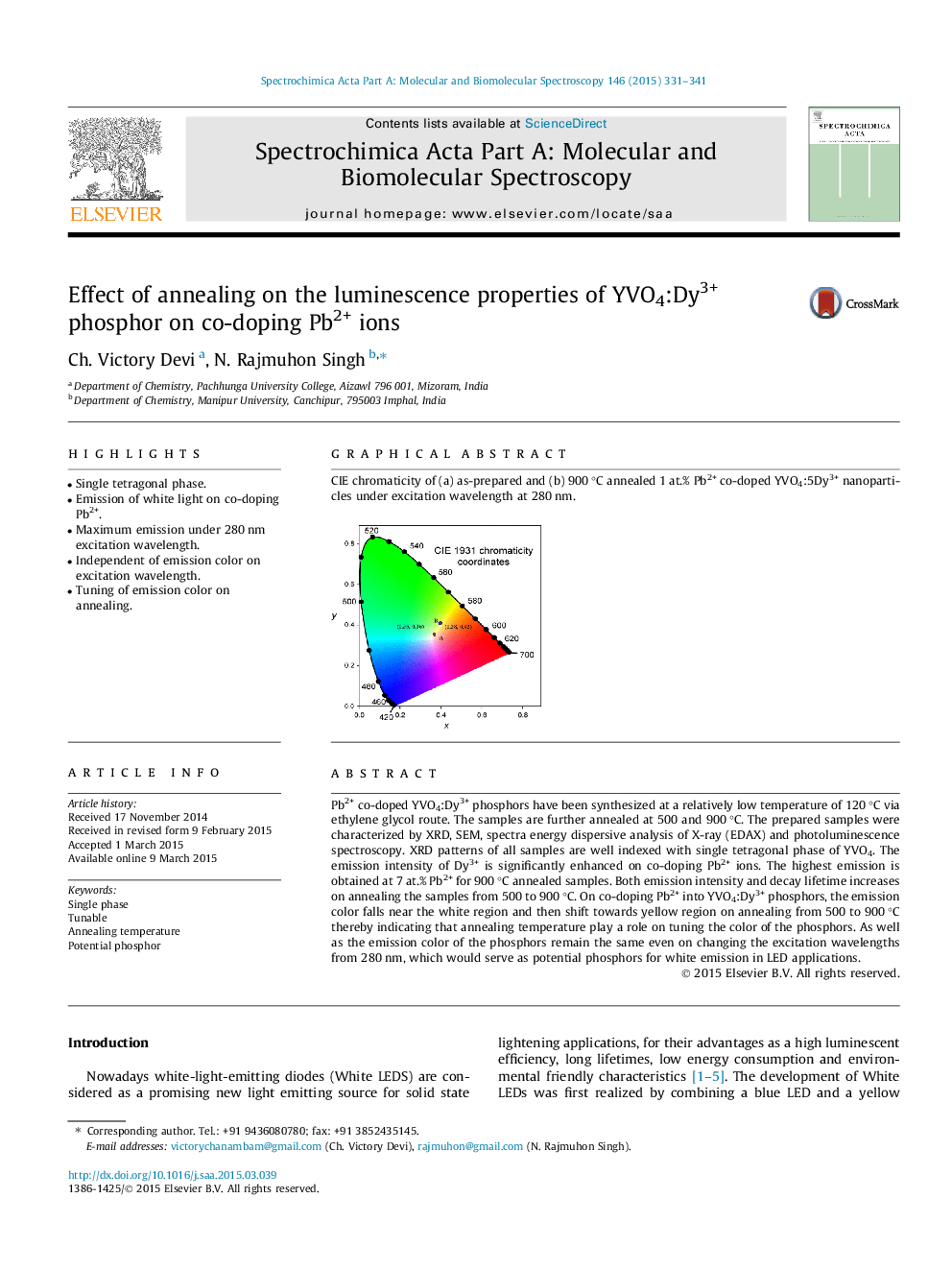| Article ID | Journal | Published Year | Pages | File Type |
|---|---|---|---|---|
| 1231931 | Spectrochimica Acta Part A: Molecular and Biomolecular Spectroscopy | 2015 | 11 Pages |
•Single tetragonal phase.•Emission of white light on co-doping Pb2+.•Maximum emission under 280 nm excitation wavelength.•Independent of emission color on excitation wavelength.•Tuning of emission color on annealing.
Pb2+ co-doped YVO4:Dy3+ phosphors have been synthesized at a relatively low temperature of 120 °C via ethylene glycol route. The samples are further annealed at 500 and 900 °C. The prepared samples were characterized by XRD, SEM, spectra energy dispersive analysis of X-ray (EDAX) and photoluminescence spectroscopy. XRD patterns of all samples are well indexed with single tetragonal phase of YVO4. The emission intensity of Dy3+ is significantly enhanced on co-doping Pb2+ ions. The highest emission is obtained at 7 at.% Pb2+ for 900 °C annealed samples. Both emission intensity and decay lifetime increases on annealing the samples from 500 to 900 °C. On co-doping Pb2+ into YVO4:Dy3+ phosphors, the emission color falls near the white region and then shift towards yellow region on annealing from 500 to 900 °C thereby indicating that annealing temperature play a role on tuning the color of the phosphors. As well as the emission color of the phosphors remain the same even on changing the excitation wavelengths from 280 nm, which would serve as potential phosphors for white emission in LED applications.
Graphical abstractCIE chromaticity of (a) as-prepared and (b) 900 °C annealed 1 at.% Pb2+ co-doped YVO4:5Dy3+ nanoparticles under excitation wavelength at 280 nm.Figure optionsDownload full-size imageDownload as PowerPoint slide
